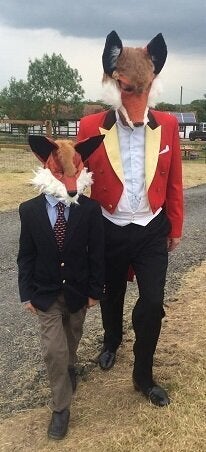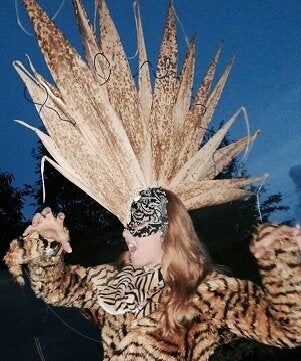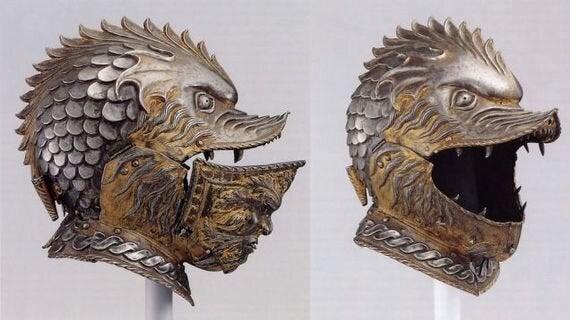'Oh I'm not creative' is the most common phrase I hear when people from all walks of life first approach The Masketeers mask making workshop. Early in our lives we are put into boxes, graded on our achievements and encouraged to drop those we don't excel at. Through this process many talents and skills are lost. I have experienced grown men and women overwhelmed with emotion at the end of a mask making workshop as they had forgotten how much they enjoyed making things with their bare hands, the pride they felt at what they had made reminded them of that playful self that was long forgotten.

The earliest existing evidence of masks can be found in the Palaeolithic cave drawings which are said to be around 40,000 years old and a collection of the world's oldest masks, dating back to the dawn of civilisation, around 9,000 years ago, are made of stone with round eye holes and prominent teeth. You can see these currently on display in Jerusalem, see BBC report here. Although mask making is one of the most ancient art forms known to man, the beauty of it in today's western culture is as a less recognised art form, it is not restricted by perceptions of right or wrong and arguably allows the maker more freedom than other art disciplines.
It is a very personal journey to make your own mask and I have seen a pattern emerge over the years of observing people make their totem piece - the mask takes form and then the maker cannot help but reveal a part of themselves through the design, build and decoration. The irony that they are making something they think is going to hide them does not escape me. What they have really made is a fraction of themselves that is rarely shown to the world. Then when they put the mask on without fail, get a diverse reaction from the world around them.

The effects of masks on others can be very primitive and an interesting social study. My most powerful memory was wearing a very tall bamboo mohican on a half face mask at a festival one summer. I ended up with a trail of youngsters following me just to see where 'someone like me' might go. I felt like the Pied Piper of Hamelin. The mohican gives a subconscious impression of power, confidence and almost aggressive control, whereas the half mask takes away the human expression to create an element of mystery.
This is where the mask links directly with fashion - you dress in clothes to make you feel a certain way for example a suit for work, sports kit or high heels. The mask does exactly the same, you put it on and it can transport you to a hidden part of yourself, helping you to embody the mask. Many a festival goer knows the feeling of embodying a playful persona for an evening and warriors before them must have gone through this process centuries ago to get into the frame of mind to face the brutality of war.

Toothface helm by an unknown Italian artist from the 17th century, image via io9.com
The Masketeers are now exploring what happens if you design and make a mask that represents a feeling or frame of mind, when you adorn the piece does your mind and body follow? To hear more about our masked experiments check out The Masketeers website or join us at Wilderness festival this year and have your own mask making journey!
The Huffington Post UK are proud media partners of Wilderness festival. Check back here for more exclusive blogs, competitions and stories soon. For tickets to the event click here: www.wildernessfestival.com
See the highlights from last year below...